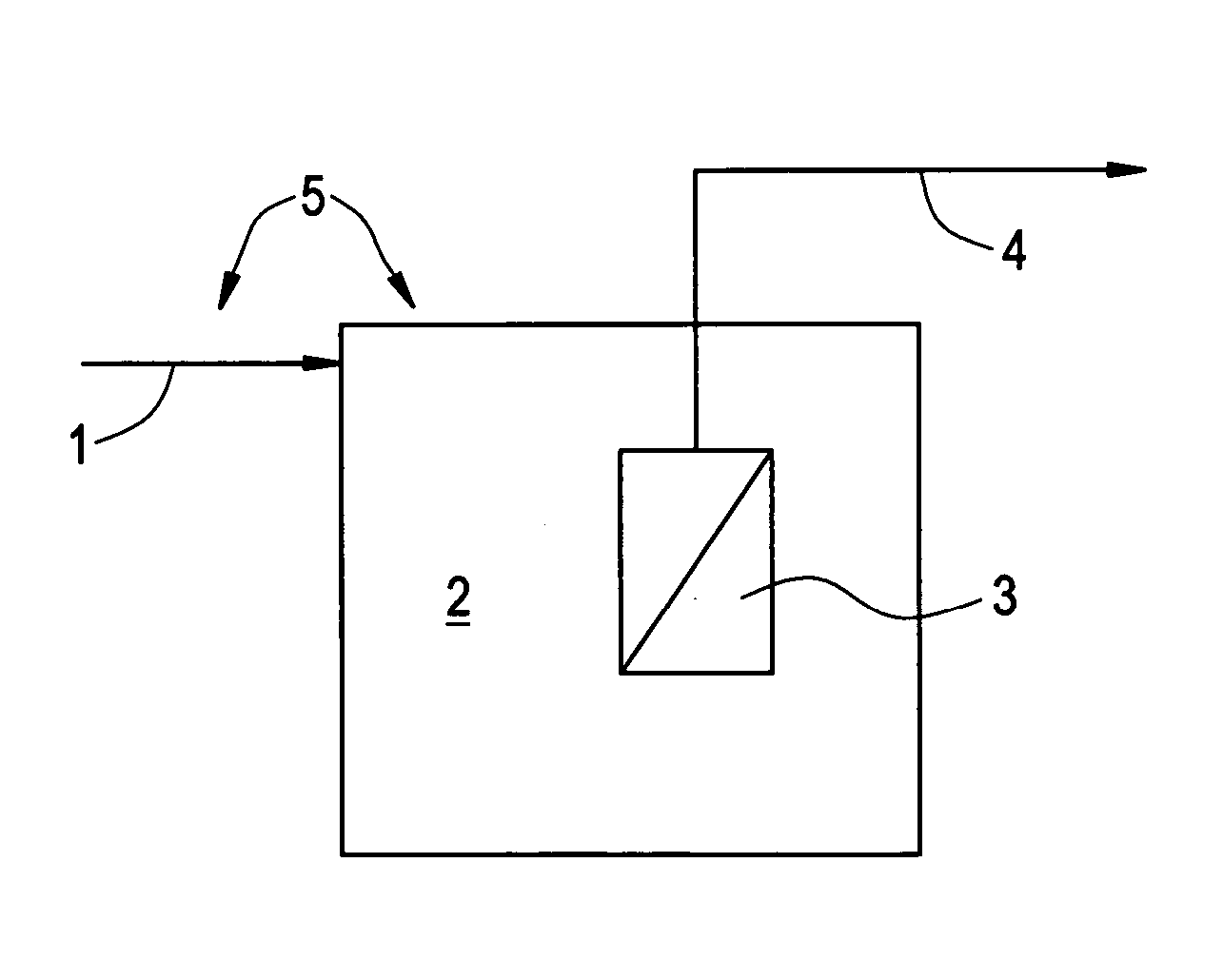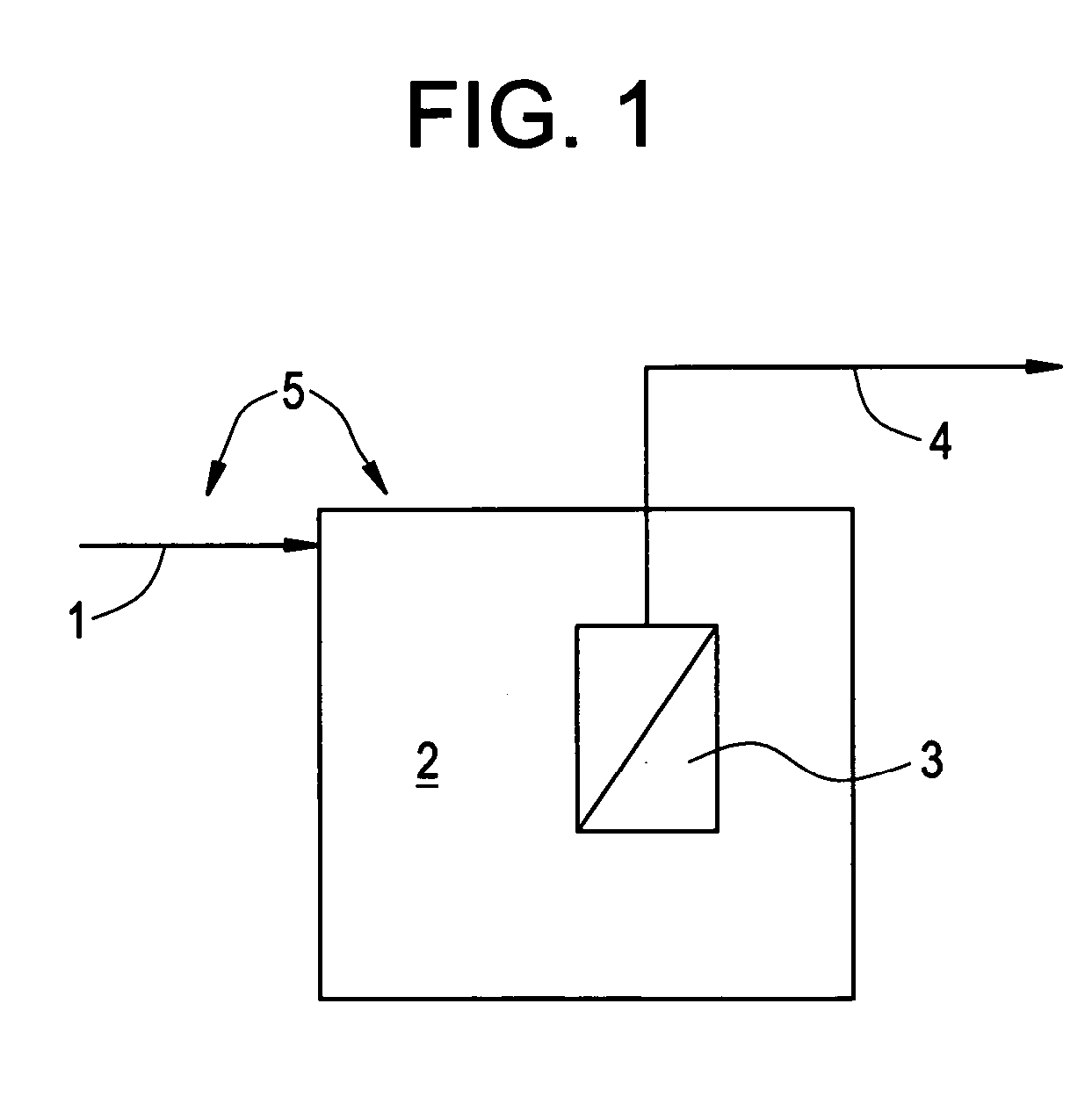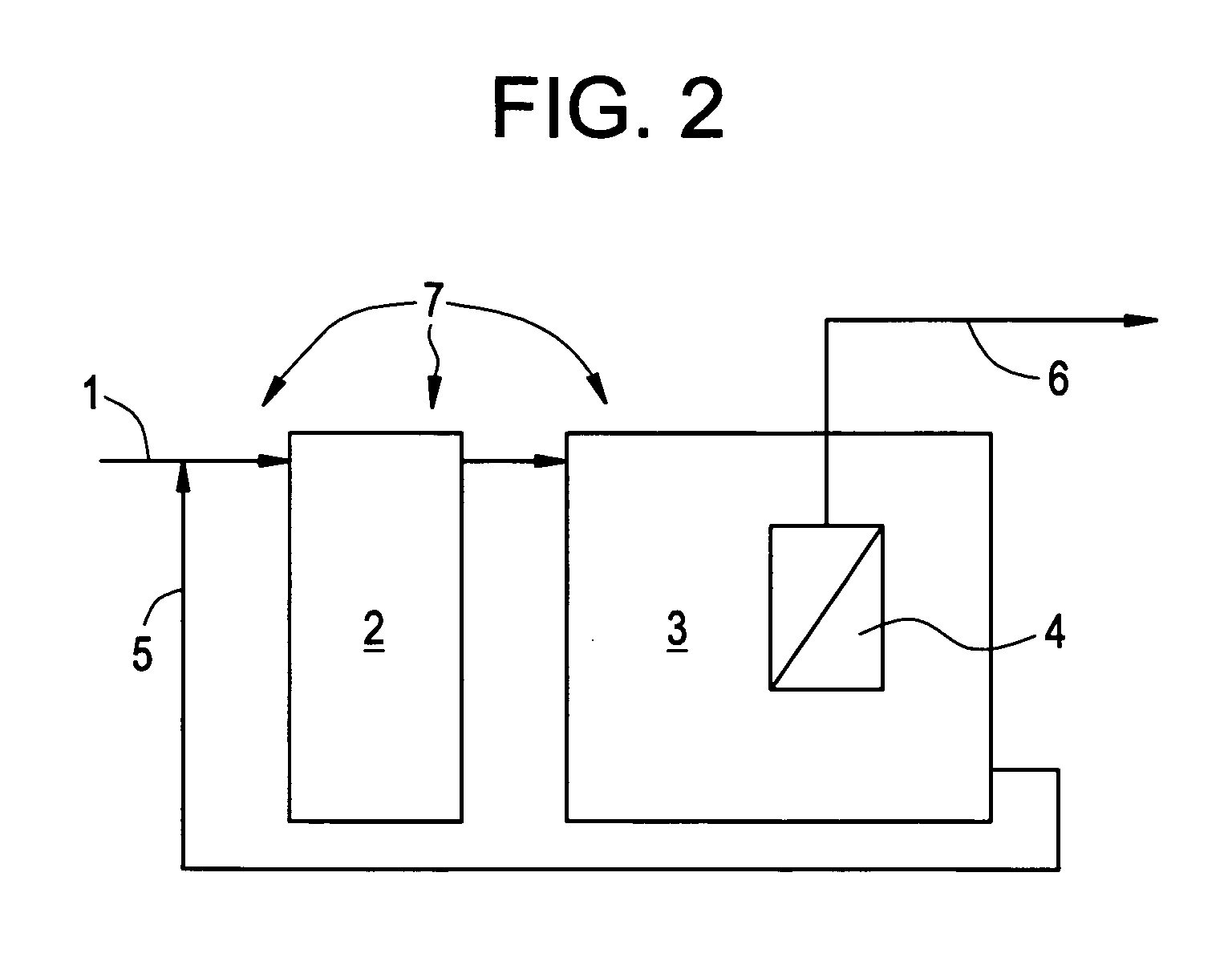Method for improving flux in a membrane bioreactor
- Summary
- Abstract
- Description
- Claims
- Application Information
AI Technical Summary
Benefits of technology
Problems solved by technology
Method used
Image
Examples
example 1
[0050] In FIG. 2, membranes (3) are directly submerged in the aeration tank (2). The aeration tank can be divided by multiple numbers of reactors. Membranes can be submerged to one of the reactors or can be installed outside of the reactor. The MLSS of the mixed liquor can be maintained between 3,000 mg / L and 30,000 mg / L. When influent (1) has higher than 5 ppm of calcium ion and / or higher than 5 ppm of magnesium and / or higher than 10 ppm of silica and / or higher than 0.1 ppm iron, scale formation or inorganic fouling can occur on the membrane surface. Cationic polymers having a MW of 10,000-20,000,000 Da and charge of 1-100% can be added directly to the one of the tanks (5) or any of the streams flowing to one of the reactors at a concentration of 10-2,000 ppm as active polymer. The upper limit of MW is limited only by the solubility or dispersibility of the polymer in water.
example 2
[0051] In FIG. 2 anoxic tank (2) is added to the aeration tank (3) and mixed liquor in the aeration tank is recycled to the anoxic tank, where no air is supplied to maintain dissolved oxygen level at 3) and recycled to anoxic tank (2). In the anoxic tank, some denitrifying bacteria utilize the combined oxygen contained in the nitrate ions and produce nitrogen gas. The membrane configuration can be flat sheet, hollow fiber, tubular, or combinations of these. Optionally membranes can be placed outside of membrane tank and the sludge in one of the tanks can be circulated to the membrane system by pump(s). When influent (1) has higher than 5 ppm of calcium ion and / or higher than 5 ppm of magnesium and / or higher than 0.1 ppm of iron and / or higher than 10 ppm of silica, scale formation or inorganic fouling can occur on the membrane surface.
[0052] Though a broad range of cationic polymers are helpful to prevent membrane fouling, high M.W. (>50,000 Da) and high mole charge (>10%) polymers ...
example 3
[0053] In FIG. 3, an anaerobic (2) and an anoxic (3) tank are added to the aeration tank (4) together for maximum phosphorous removal. Though the mixed liquor recycled from the anoxic tank to the anaerobic tank (7) contains some nitrate ions, the overall oxygen supply is extremely limited since DO level is less than 0.1 mg / L. Even in this environment, some phosphorous accumulation organisms (PAOs) can obtain energy by hydrolyzing the polymeric form of phosphorous that was accumulated in the cell. Once PAOs move to aeration tank through the anoxic tank, they overly accumulate phosphorous for the future use, which is the so called “Luxury Uptake”. The overly accumulated phosphorous is eventually removed when excess biosolids are removed from the system. The membrane configuration can be flat sheet, hollow fiber, tubular, or a combination of these. Optionally the membranes can be placed outside of the tanks and the sludge can be circulated through the membranes to the tanks by pumps. W...
PUM
 Login to View More
Login to View More Abstract
Description
Claims
Application Information
 Login to View More
Login to View More - R&D
- Intellectual Property
- Life Sciences
- Materials
- Tech Scout
- Unparalleled Data Quality
- Higher Quality Content
- 60% Fewer Hallucinations
Browse by: Latest US Patents, China's latest patents, Technical Efficacy Thesaurus, Application Domain, Technology Topic, Popular Technical Reports.
© 2025 PatSnap. All rights reserved.Legal|Privacy policy|Modern Slavery Act Transparency Statement|Sitemap|About US| Contact US: help@patsnap.com



